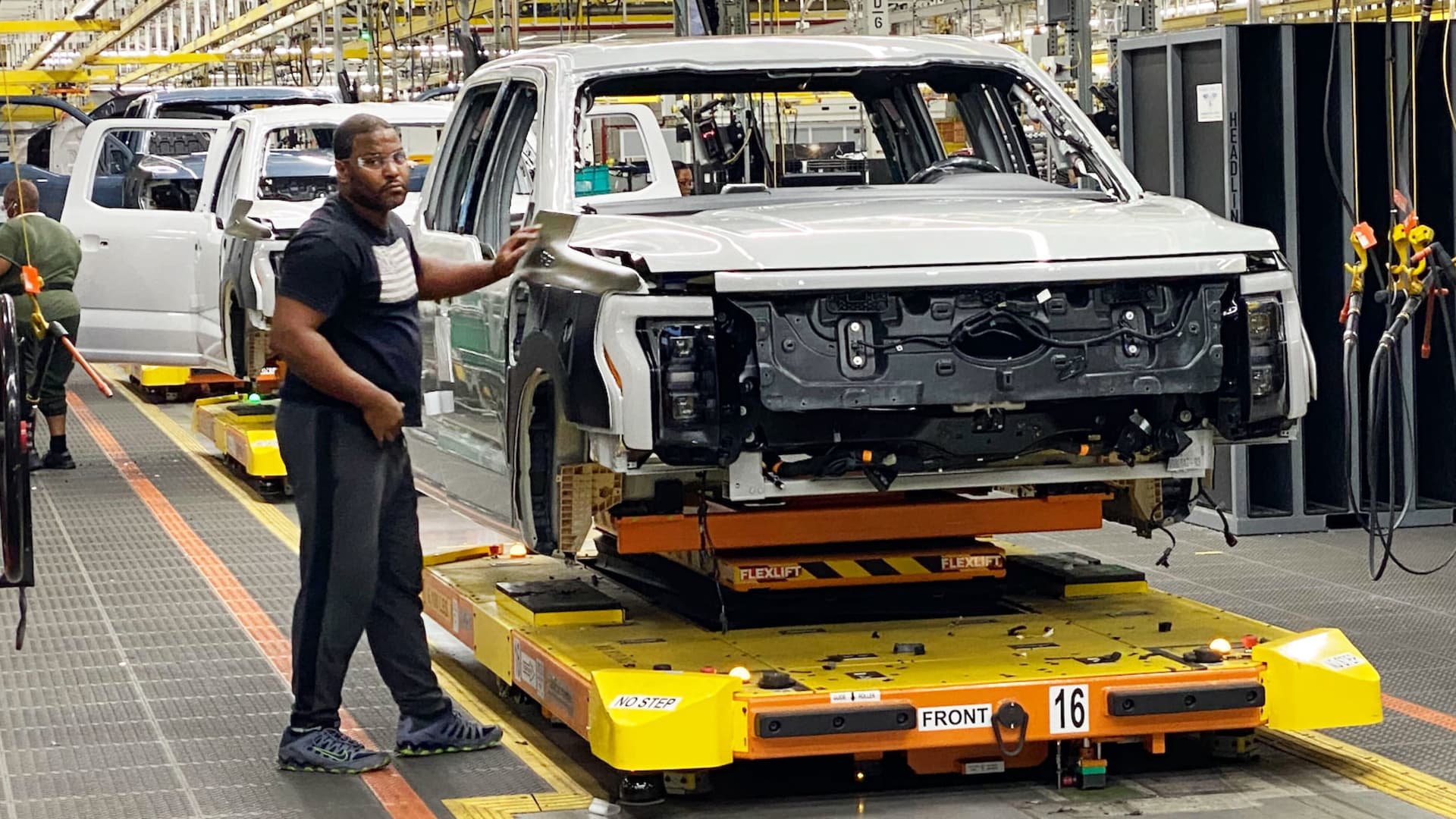Ford Motor said Thursday that many customers in North America are no longer willing to pay a premium for an electric vehicle over an internal-combustion or hybrid alternative.
As a result, it’s postponing about $12 billion in planned spending on new EV manufacturing capacity.
Customers’ reluctance to pay extra for EVs has complicated Ford’s ambitious and expensive plans to sharply increase production of those vehicles. While Ford’s – and the industry’s – sales of EVs are growing, they aren’t growing at the pace Ford had expected.
Ford executives emphasized that the company isn’t cutting back its spending on future electric vehicle models. But it now plans to ramp up its EV manufacturing capacity, and its spending on that capacity, more gradually than previously planned.
“We’re not moving away from our second generation [EV] products,” CFO John Lawler said in a media briefing Thursday. “We are, though, looking at the pace of capacity that we’re putting in place. We are going to push out some of that investment.”
Lawler said that Ford will postpone about $12 billion in planned spending on manufacturing capacity for EVs, including a planned second battery plant at a new campus in Kentucky. But, he noted, construction of Blue Oval City – Ford’s new EV manufacturing campus in Tennessee – will continue as originally planned.
“The customer is going to decide what the volumes are,” Lawler said. “Ford is able to balance production of gas, hybrid and electric vehicles to match the speed of EV adoption in a way that others can’t.”
As part of its third-quarter earnings report, Ford said on Thursday that its electric-vehicle business unit, called Ford Model e, lost $1.3 billion on an operating basis in the period. That’s roughly double its year-ago loss, despite a 26% increase in revenue.
Through the first three quarters of 2023, Model e posted an operating loss of about $3.1 billion, on track with Ford’s previous guidance calling for a full-year operating loss of $4.5 billion for the Model e business unit.
Ford withdrew all of its 2023 guidance Thursday in light of its tentative deal with the United Auto Workers labor union.
Read the full article here







